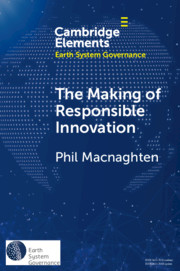Element contents
The Making of Responsible Innovation
Published online by Cambridge University Press: 04 July 2020
Summary
- Type
- Element
- Information
- Online ISBN: 9781108871044Publisher: Cambridge University PressPrint publication: 06 August 2020
References
- 37
- Cited by



